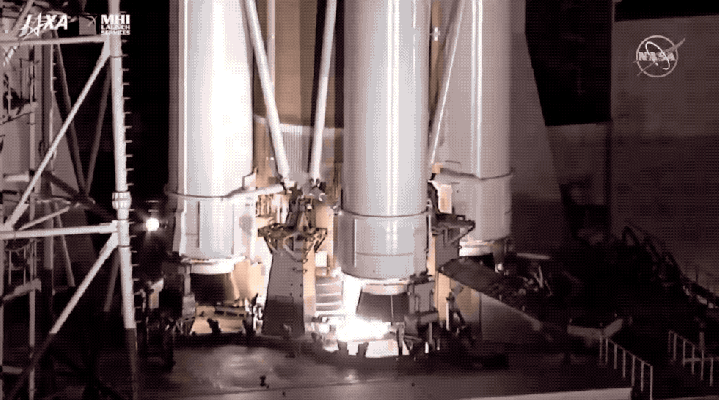Japan’s Mitsubishi Heavy Industries (MHI) has successfully launched one of its H-IIB rockets, carrying a payload of supplies, experimental materials and new replacement batteries to help power the International Space Station. The rocket, commissioned by Japan’s Aerospace Exploration Agency, took off from Japan’s Tanegashima Space Center at its scheduled instantaneous launch window of 12:05 PM EDT (1:05 AM JST), succeeding during its second try after an initial attempt was scrubbed earlier this month.
This is the eighth launch of the H-IIB, and its H-II Transfer Vehicle (HTV), and it’s the second-to-last planned mission for the H-IIB before this series of MHI rocket is retired. It’s set to be replaced by the higher-capacity, lower-cost H3, which MHI hopes to fly for the first time next year.
The HTV-8 (aka “Kounotori-8”) mission will deliver a load of cargo to the ISS, separated across both a pressurized and an unpressurized cargo compartment on the HTV unpiloted spacecraft, which will dock with the ISS for unloading. Experiments on board include one that will help scientists study how different regoliths (terrain material from extra-terrestrial bodies, including the Moon and Mars) behave in zero gravity environments; an upgrade for the Cell Biology experiment facility on the ISS; and a new small-sat that will be used to research optical communication in space.
There’s also a new set of six lithium-ion batteries on board that will replace nickel-hydrogen power cells on the station, which will involve a number of spacewalks and use of the station’s robotic manipulation devices to install later this year. Nickel-hydrogen batteries have been popular for use in satellites and spacecraft, but lithium-ion has some advantages in terms of recharge and discharge speed, and battery memory, though they aren’t as long-lived as the existing variety. The ISS is already operating beyond its service life, however, and NASA hopes that it’ll eventually be replaced by a commercial space station, so that’s probably not as much of a concern.
The HTV spacecraft will now continue to the ISS where it will attach to the Harmony module of the station in just a few days, where it’s set to spend about a month as its cargo is unloaded by ISS astronauts.
